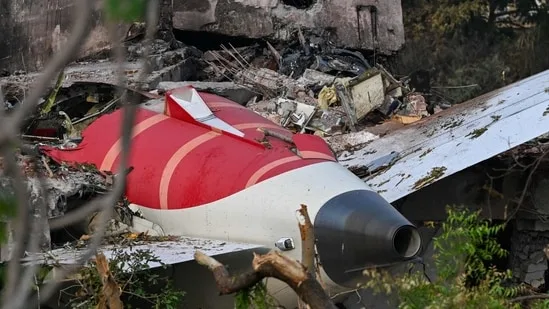In a harrowing aviation disaster, Air India’s Boeing 787-8 aircraft, VT-ANB, crashed shortly after takeoff from Ahmedabad’s Sardar Vallabhbhai Patel International Airport on 12 June 2025, killing 241 people, including both flight crew, almost all passengers, and 19 individuals on the ground. The aircraft, operating scheduled Flight AI171 to London Gatwick, suffered a sudden dual engine shutdown just seconds after liftoff. According to the Aircraft Accident Investigation Bureau (AAIB), the incident occurred at approximately 13:39 IST during the initial climb phase.
Preliminary findings paint a chilling picture. The Enhanced Airborne Flight Recorder (EAFR) captured the moment when “Engine 1 and Engine 2 fuel cutoff switches transitioned from RUN to CUTOFF position one after another with a time gap of 01 sec,” a sequence that extinguished thrust from both engines mid-air. The cockpit voice recording revealed a brief but revealing exchange: “One of the pilots is heard asking the other why did he cutoff. The other pilot responded that he did not do so.” This indicates an uncommanded or accidental fuel shutoff—still under close investigation.
Although the aircraft briefly began a relight sequence, as confirmed by rising exhaust gas temperatures (EGT) and partial engine response, the recovery was incomplete. The AAIB notes, “Engine 1’s core deceleration stopped, reversed and started to progress to recovery. Engine 2 was able to relight but could not arrest core speed deceleration.” The aircraft ultimately failed to gain sufficient altitude, losing height rapidly and impacting several buildings within the BJ Medical College hostel area, just 0.9 nautical miles from the runway.
The wreckage strewn across multiple structures revealed devastating fragmentation. “Impact witness marks on the building and airplane indicated a likely nose-up attitude (about 8°) and wings level,” suggesting that the pilots were trying to maintain lift until the last moment. The Ram Air Turbine (RAT) had deployed during descent, a backup system designed to preserve minimal control during electrical failure. One of the last actions recorded by the EAFR shows the “APU Inlet Door began opening... consistent with the APU Auto Start logic” as the aircraft struggled to restore power.
Both flight crew members were experienced, with the captain having logged over 15,000 hours. Maintenance records revealed no critical faults, although a non-mandatory advisory (SAIB) issued by the FAA concerning a potential fuel control switch issue had not been acted upon by the airline—an element investigators are examining for relevance.
Representatives from the U.S. National Transportation Safety Board, Boeing, GE Aviation, and authorities from the UK, Portugal, and Canada are assisting in the inquiry. AAIB emphasized that the report aims solely at “the prevention of future accidents and incidents and not to apportion blame or liability.”
Emergency responders arrived quickly, battling fire and assisting survivors, including one critically injured passenger and dozens on the ground. The investigation is ongoing, with authorities analyzing technical data, crew health, and aircraft systems in pursuit of a full understanding of this catastrophic event.


Comments